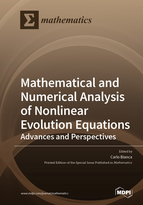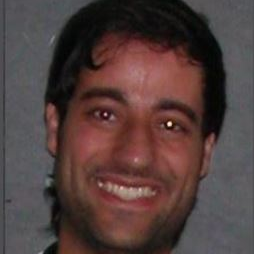Mathematical and Numerical Analysis of Nonlinear Evolution Equations : Advances and Perspectives
A special issue of Mathematics (ISSN 2227-7390). This special issue belongs to the section "Difference and Differential Equations".
Deadline for manuscript submissions: closed (31 March 2020) | Viewed by 24743
Special Issue Editor
Interests: mathematical modeling and analysis of complex systems; kinetic equations; numerical methods for PDE
Special Issues, Collections and Topics in MDPI journals
Special Issue Information
Dear Colleagues,
Recently, interactions between researchers working in the field of mathematical physics and in the field of applied sciences have gained much attention, and new challenges have been raised including the possibility to derive evolution differential equations that are able to describe most phenomena arising in real-world systems. On the one hand, mathematical analysis allows one to obtain information on the qualitative behaviors of the system including the existence of solutions, asymptotic behaviors, and nonlinear dynamics. On the other hand, numerical and computational analysis furnishes methods to obtain quantitative information about solutions and the possibility to compare the time evolution of solutions to differential equations with empirical data.
This Special Issue is devoted to researchers working in the fields of pure and applied mathematical physics, specifically to researchers who are involved in the mathematical and numerical analysis of nonlinear evolution equations and their applications. Original research articles as well as review articles are welcome.
The topics include, but are not limited to, the following:
- Prey–predator models;
- Kinetic-type models;
- Multiscale models;
- Computational models;
- Fractional models;
- Asymptotic analysis and methods;
- Approximative methods;
- Bifurcation analysis;
- Chaos and synchronization analysis;
- Nonlinear dynamics;
- Complex dynamics;
- Far-from-equilibrium dynamics;
- Blow-up of solutions;
- Fractional calculus.
Prof. Carlo Bianca
Guest Editor
Manuscript Submission Information
Manuscripts should be submitted online at www.mdpi.com by registering and logging in to this website. Once you are registered, click here to go to the submission form. Manuscripts can be submitted until the deadline. All submissions that pass pre-check are peer-reviewed. Accepted papers will be published continuously in the journal (as soon as accepted) and will be listed together on the special issue website. Research articles, review articles as well as short communications are invited. For planned papers, a title and short abstract (about 100 words) can be sent to the Editorial Office for announcement on this website.
Submitted manuscripts should not have been published previously, nor be under consideration for publication elsewhere (except conference proceedings papers). All manuscripts are thoroughly refereed through a single-blind peer-review process. A guide for authors and other relevant information for submission of manuscripts is available on the Instructions for Authors page. Mathematics is an international peer-reviewed open access semimonthly journal published by MDPI.
Please visit the Instructions for Authors page before submitting a manuscript. The Article Processing Charge (APC) for publication in this open access journal is 2600 CHF (Swiss Francs). Submitted papers should be well formatted and use good English. Authors may use MDPI's English editing service prior to publication or during author revisions.






